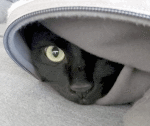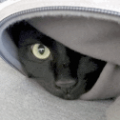cathalferris
Now also known as EI4IWB, passed the IRTS/Comreg HAREC exam, and now fully licensed as a Radio Amateur.
About
- Username
- cathalferris
- Joined
- Visits
- 113
- Last Active
- Roles
- Member
- Points
- 3
-
wsprdaemon - A Raspberry Pi WSPR decoding service
@WA2ZKD My kiwis are aready being listed on your pages.
SWLIO52RP in Limerick, Ireland, MFA-30 cheapie amplified antenna as a 4m horizontal dipole literally on the lawn in the garden, gets ~15% of world's wspr transmissions, top 50 is positions.
SWLJN47FJ in Zurich, Switzerland. AAA-1c amplified antenna, two pairs of 1m pipe loops, in the attic of an apartment building (loads of noise), get ~11% of wspr transmissions, top 100 positions.
The Zurich one may have to go offline in a month, depending on the job market results. -
Continuous automatic scaling of waterfall display?
Yes, I had noted this.
My current workaround is to tap shift+"s" once to set auto scale, then tap shift+"w" between 5 and 10 times quickly until satisfied with the appearance of the waterfall. I'm usually tending to go 10 steps so suit my aesthetic requirements.
When I'm using the sqrt=2 parameter in the URL I'm picking 8 steps.
I also think that people are forgetting to redo the auto scaling when changing zoom level, and that can have a less than desired effect on the view.
I wonder, would a solution to this be to mark the current scaling numbers relative to what the auto-scale values are for that view, and when changing zoom level that the same delta between auto and user be applied to a new autoscale in the new zoom level?
As an example, the user is in WF6, and the autoscale gives -49 and -101, but the user has chosen -55 and -93; that's a delta of -6 and +8.
Then the user zooms to WF9, and the autoscale for that view when the zoom has completed is -43 and -110; add the delta of -6 and +8 to give -49 and -102
That seems to work for the scenarios I've tried manually here at least.
John, to better answer your question:
My own experience is that the waterfall in SDRConsole has been the most aesthetically pleasing for me, and the "auto" button there does a pretty good job of getting the range generally right. Their choice of colour scheme really does help that though with the navy/blue/grey/white/yellow scheme is nice for contrast for radio signals. The refresh rate of SDRConsole waterfall has also really helped my visualisation of noise generators in the area, but that's a rabbit-hole for another time.
I've done a fair amount of personal work in visualisation of astronomical images and using false-colour for gaining more info from monochromatic images I've taken, and I've found that the most useful is something similar to the SDRConsole scheme, with nice contrast and colour only really used for the off-scale areas.
Hope that helps.
-Cathal. -
HF Emergency broadcast frequencies
The Ireland ISP is HEANet who had the interesting note of being the only Irish ISP that was not forced to filter the Piratebay when that court order came through, as it's an academic supplier and not a home supplier. One SSH port forward later from a machine I had access to on an academic network and I once again had unfettered net access via a proxy. That was very useful when I was abroad and using Irish websites that were geo-locked.
Agreed re: DNS as one of the easy ways to block/lose portions of the net. The other interesting way is BGP poisoning - and that's really interesting to see who trusts who!



